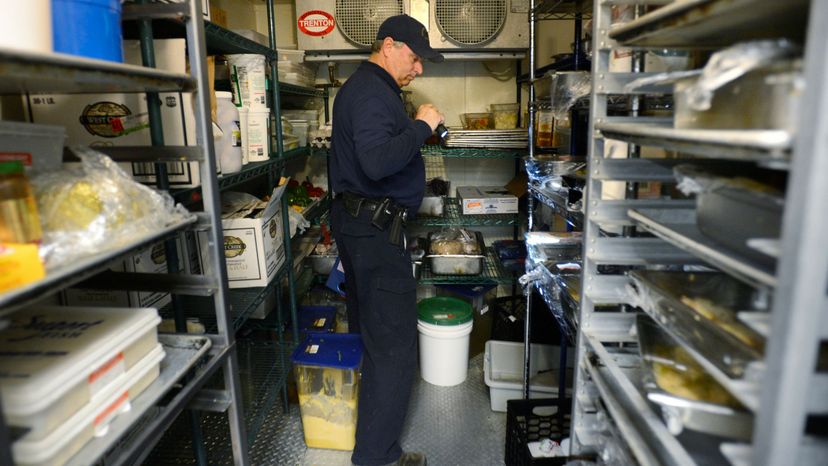
There it is, posted right in the front window of your favorite fried chicken spot — a "B" rating from the health department. You've been eating at Big Al's Cluckin' Chicken Shack for years and it's always earned As. It makes you wonder; what kind of corners is Big Al cutting in the kitchen to get the place demoted to a B, and should you stop eating there?
Restaurant health inspections are valuable public services paid by your hard-earned tax dollars. But that doesn't mean that the average restaurant-goer has any idea what inspections results are all about. Is the food at a place that earns a B or an 82 percent on its latest inspection really more likely to make you sick than a restaurant that scores an A or a 95 percent?
Advertisement
The short answer: probably not. The main purpose of restaurant inspections is to make sure that local eateries are complying with public health regulations. Those laws are designed to lower the risk of foodborne illnesses by setting rules about employee handwashing, wearing gloves when handling ready-to-eat foods, maintaining minimum internal cooking temperatures for meats, among other standards.
While a restaurant's inspection score is useful shorthand for judging the overall attentiveness of the owner and kitchen staff, it's neither a total condemnation or a guarantee of safety. To be an informed consumer, you really need to know why the restaurant received its rating. Were the violations relatively harmless, like a broken screen on a kitchen window? Or were they objectively scary, like rats crawling through that broken screen?
To do that, you need to learn how restaurant inspectors do their job, what constitutes a major or minor violation, and what it takes for the health department to shut a restaurant down. Then you'll be in a better position to decide if Big Al's 16-piece bucket is worth the risk.